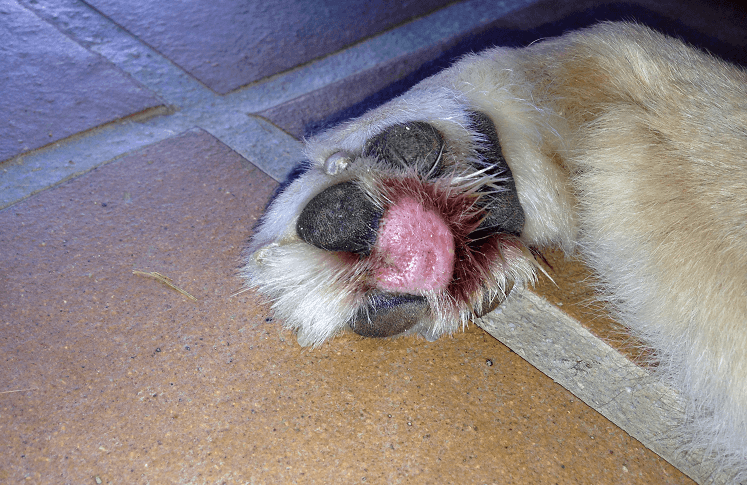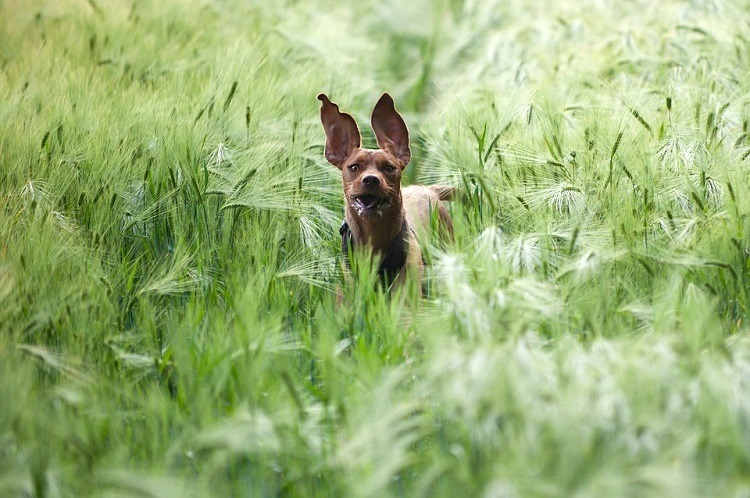No matter how hard we try to keep our pets safe, there are some hidden dangers lurking outdoors that can cause them serious harm.
Foxtails are a burden for pets and owners across the country, and when left untreated they can be potentially fatal to our dogs.
Foxtails refer to a group of different grass species that are usually found in the warmer months, and they can pop up anywhere from your back yard to the local park.
As dog owners, it’s important to be vigilant when our pets are outside to prevent their seeds from getting reaching them and doing serious damage.
If you live in an area, or hiking there where foxtails are present, you probably want to know how to avoid them altogether.
This guide can show you how to prevent a foxtail injury during summer and what signs and symptoms to look for that could indicate you need to get your dog to a vet immediately.
What Are Foxtails?

Foxtails are a generic term used to describe a number of wild grass species that are usually found in the western parts of the United States. T
hese are commonly related to wild barley, and although they originally came from the west coast it seems they have been spreading across other parts of the country as well.
Foxtail is a weed that seems harmless upon first glance, but most dog owners probably already know just how dangerous it can be. It grows in grassland areas and can found in all types of places from the edges of rivers, to parklands, and even if your back yard.
During the warmer months, they pose more of a threat, as after winter and spring the seed has developed and dried out.
The grass and its seeds take on the shape of a fluffy foxtail, hence its name, and as it breaks into smaller pieces the sharp seeds get even sharper, with a number of microscopic barbs being found on each one.
When a dog brushes up again this grass it collects the seed, either catching on its fur or falling into it. Sometimes it might fall out on its own, but usually, it digs deep into the fur, and as they’re designed to burrow they can quickly make their way into your dog’s ears, eyes, skin, and throat.
Why Are Foxtails So Dangerous to Dogs?
Any human who runs their hands along a foxtail will be able to tell instantly why they can hurt our beloved dogs.
The microscopic barbs that cover the seeds of this grass are sharp and incredibly hard to get out of the skin once lodged in. For dogs though, there are two main serious threats that it poses.
Firstly, a foxtail can cause a foreign body reaction which is where it lodges into the animal’s skin, throat, eyes, ears, or even through the abdominal or chest wall. Secondly, it can lead to an infection due to a fungus that grows in dead tissues.
Other infections caused by foxtails include pneumonia, blastomycosis, and discospondylitis.
When not treated promptly and correctly, a dog can become very ill due to foxtails. In some cases, infection or lodgement can cause death. Therefore, being aware of the symptoms and what you can do to prevent this grass from getting to your dog is essential.
Signs and Symptoms of Foxtail Injuries

It can be hard to tell if your dog’s come into contact with a foxtail because of the many different places they can become lodged or burrow into.
However, these are some symptoms that could indicate a potential run-in with the wild grass.
Because these seeds are so small and they can become lodged where we can’t see them, you should always take your dog to the vet if you suspect foxtails are the cause of their injury.
A vet knows exactly what to look for and can take fast and decisive action if something is found, which could end up saving your dog’s life.
How to Prevent a Foxtail Invasion
Any dog can be targeted by foxtails so it’s important to take steps to avoid encountering them altogether.
Follow these tips to prevent a foxtail from getting near your dog so you can keep them safe from harm.
A Small But Lethal Problem for Dogs
Foxtails might be small, but they have the potential to do a lot of harm to our four-legged friends.
Being mindful of where they grow and the potential symptoms are the best first steps you can take to preventing an invasion, so always be vigilant.
Just one tiny seed can do so much to your dog, and it’s simply not worth the risk of not knowing what to look for.

